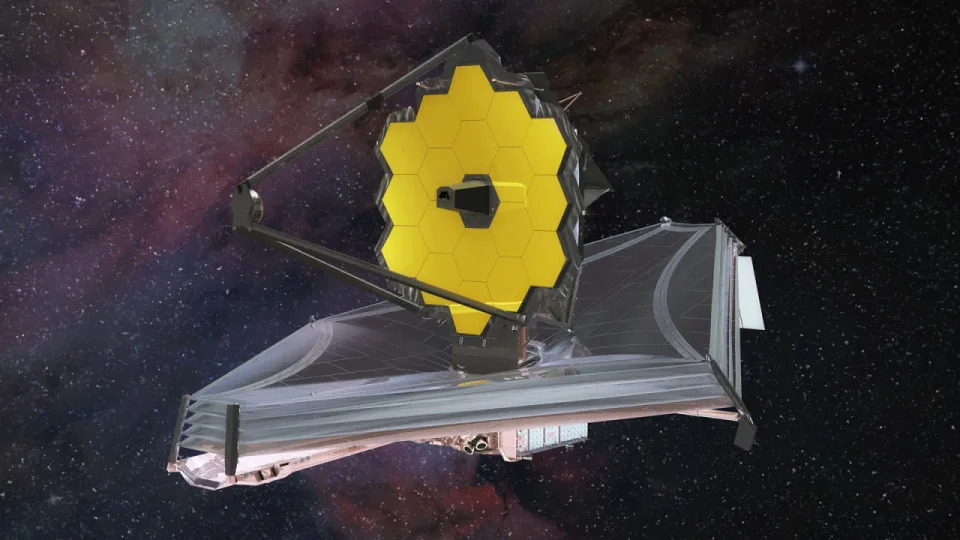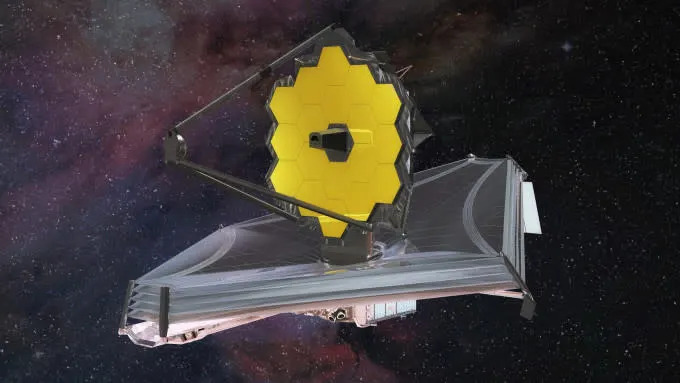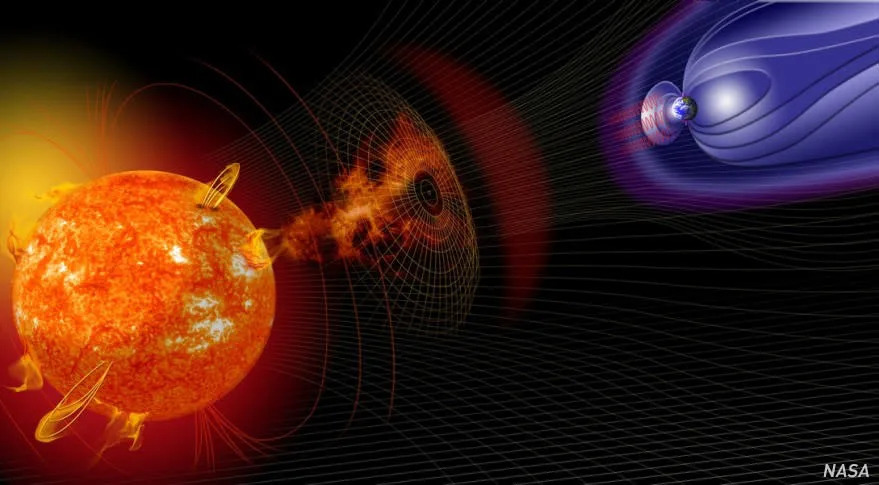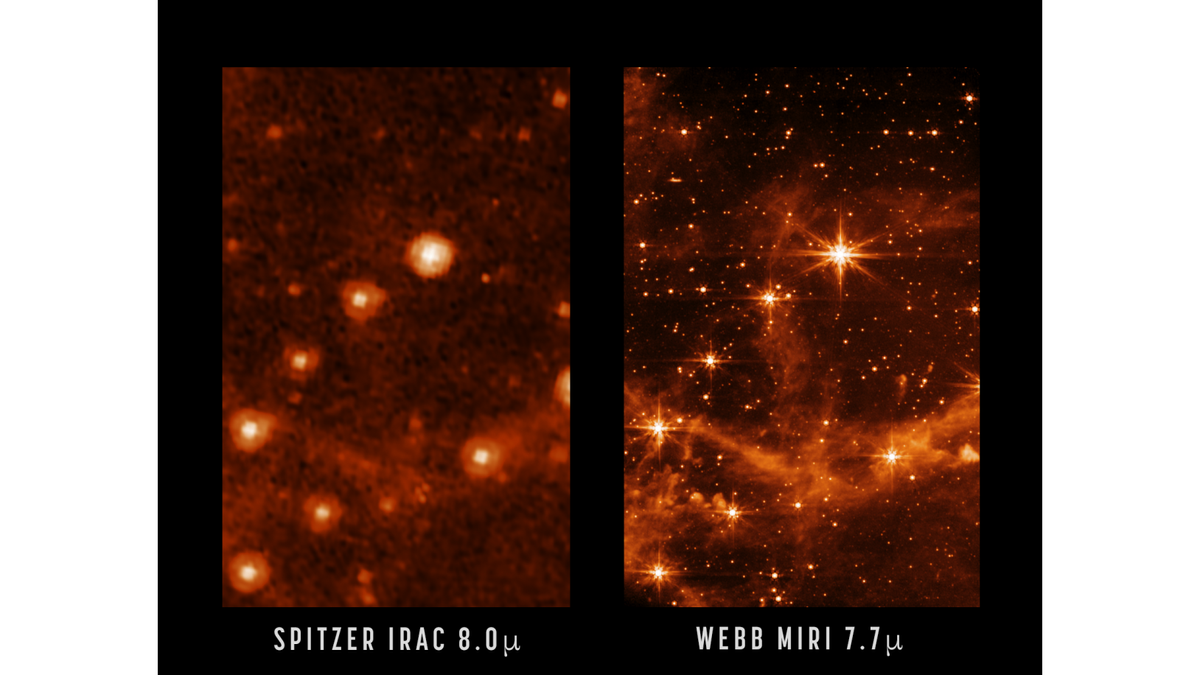Posted for fair use.....
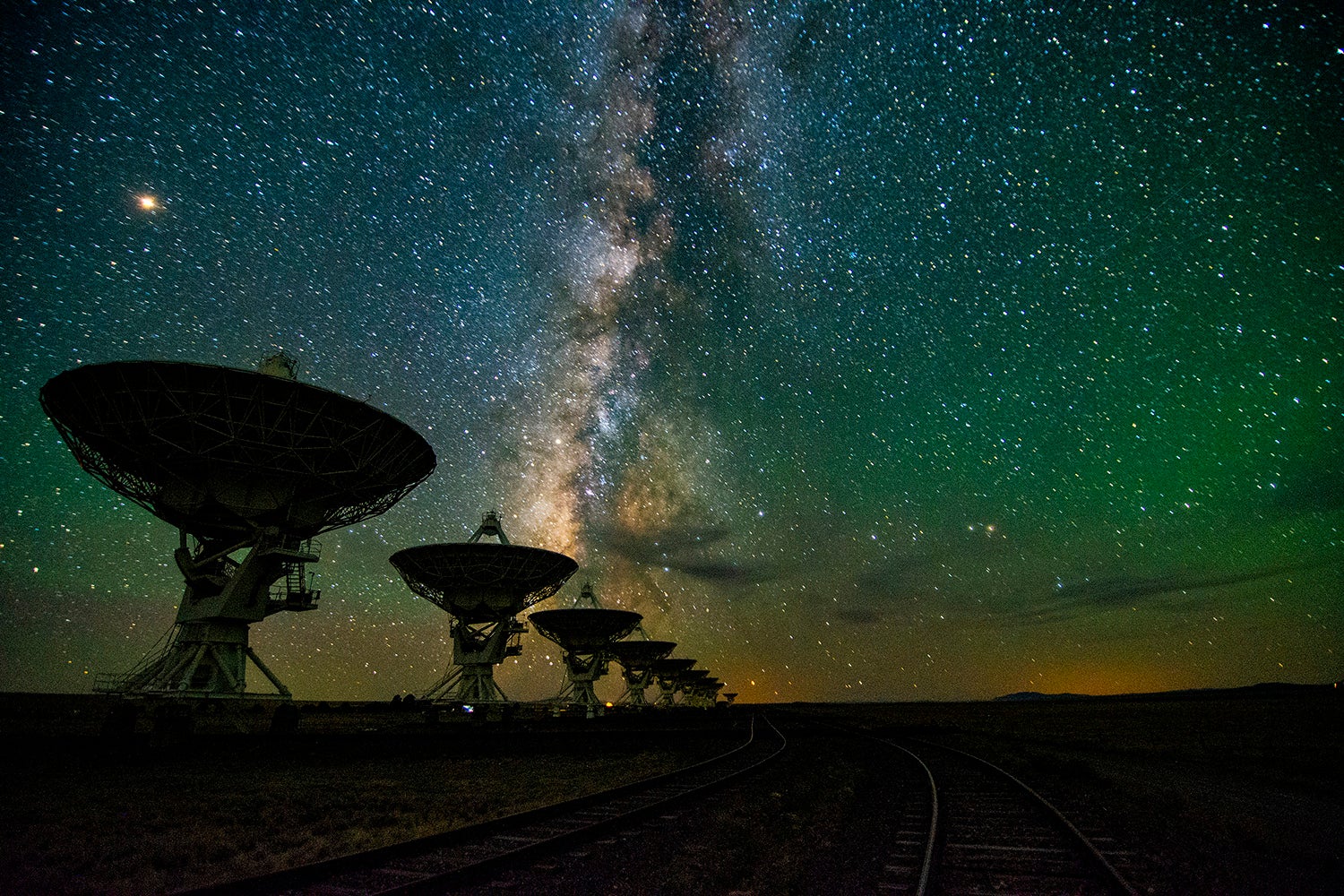
 news.stanford.edu
news.stanford.edu
DECEMBER 16, 2021
Astronomy’s newest 10-year plan focuses on alien Earths
Stanford astronomer Bruce Macintosh was a co-author of the latest “Decadal Survey,” a once-in-a-decade report that helps set the research priorities for the astronomy and astrophysics communities. Those priorities will include the identification of other habitable Earth-like worlds and determining whether life exists elsewhere in the universe.
BY KER THAN
Every 10 years, the National Academies of Sciences, Engineering and Medicine issues a report that helps set the research priorities for the astronomy and astrophysics communities for the next decade.
Bruce Macintosh(Image credit: Courtesy Stanford Department of Physics)
The seventh and latest “Decadal Survey,” published earlier this fall, recommended a number of new and ambitious ground- and space-based observatories and missions for discovering extrasolar planets – planets beyond our solar system – resembling Earth; studying colliding black holes and other cosmic cataclysms; and understanding the origin and evolution of galaxies. It also outlined new initiatives to help make sure the tools and technologies critical to these missions are developed on time and on budget. And in a departure from past Decadal Surveys, this latest report also focused on broader issues affecting the astronomy and astrophysics communities, including the diversity and mental health of their practitioners and their relationship to society at large.
Stanford astronomer Bruce Macintosh was a member of the National Academies committee that issued the 614-page report, titled “Pathways to Discovery in Astronomy and Astrophysics for the 2020s.”
Macintosh, whose research focuses on directly imaging extrasolar planets, spoke to Stanford News about the report’s conclusions and recommendations.
The Decadal Survey recommends that NASA and the National Science Foundation (NSF) construct several new space- and ground-based observatories, respectively. How will the observatories differ from one another, and what will they be studying?
On the ground, there are three big recommendations to NSF. The highest priority is a federal role in one or two “Extremely Large Telescope” project collaborations – about 25 percent in each the Giant Magellan Telescope and the Thirty Meter Telescope. These are general-purpose facilities that can do almost any kind of astrophysics, from mapping nearby asteroids to the first galaxies billions of light years away, as well as study exoplanets.
The longest-term recommendation is the Next Generation Very Large Array (NGVLA). The current VLA is a network of radio telescope dishes in New Mexico that combine to form a single telescope 20 miles across – we call this a “radio interferometer.” The NGVLA would replace this with a new array that would cover most of the continental U.S., taking advantage of modern computing to combine this into a single telescope thousands of miles across. It would also do a lot of different science missions.
The third ground recommendation, which is joint to NSF and the Department of Energy, is to build a more specialized array of radio telescopes to look at the Cosmic Microwave Background (CMB) – the radiation left over from the Big Bang. Importantly, the Decadal didn’t recommend it just for cosmology and the early universe – the telescope will be surveying the whole sky and will be able to see clusters of galaxies, stellar explosions, etc., and the project has to make the data available to everyone.
In space, the biggest recommendation is a big optical/infrared/ultraviolet telescope optimized for studying Earth-like planets, and the Great Observatories program – more on that below. While those are developing, there will be a regular program for a new kind of mission called a “Probe.” About the cost of the [$690 million] Stanford-led Fermi spacecraft, these are powerful but specialized missions; teams will compete to see who gets to lead which mission. The two Probe missions proposed so far are a far-infrared telescope that could study dust in early galaxies or trace water as planets are forming, or an X-ray telescope with incredibly precise optics to make ultra-sharp images of things like black holes.
According to the survey, exoplanets should be a major research focus for the field in the coming decade. Why is that? And what do astronomers want to learn about planets beyond our solar system?
Exoplanets are a focus because they’re awesome
SCIENCE & TECHNOLOGY
Physics professor explains exoplanets
A Q&A with astronomer Bruce Macintosh on what people should understand about exoplanets – planets outside our solar system – and what exoplanet research means for life on Earth.
But more seriously, we’re in a position to make some really transformative discoveries. In the past decade we’ve been studying exoplanets but mostly by counting them – figuring out how many planets of different sizes exist. We have no idea what many of them are really like.
Now we’re starting to study them in detail and measure their atmospheres. With the telescopes we have right now, we can do that for giant planets (Neptune- or Jupiter-sized) that are either very close to their star or very far away.
In the next decade, we’ll measure the spectra, or light, of new kinds of planets. Even the new James Webb Space Telescope (JWST) launching later this month will still be limited to planets close to their stars – closer than Mercury is to our sun – but sensitive enough to measure the atmospheres of Earth-sized planets. Most will be superheated, but some, orbiting close to the smallest and coldest stars, could have Earth-like conditions such as liquid water on their surface. The Extremely Large Telescopes will play a role too, probing planets like our own gas giants, and helping put together a comprehensive picture of how planets form and evolve and maybe approach conditions for life.
What other research priorities did the committee suggest the astronomy and astrophysics community focus on in the coming decade?
Other than stars and planets, the committee identified two additional major research themes and priority areas within them. For thousands of years astronomers have studied the universe with light – whether that’s visible light or X-ray light or radio light. But the universe throws a lot of other things at us – cosmic rays, neutrinos and the ripples in space we call gravitational waves. These “new messengers” come from energetic and exotic physics. New messenger projects will focus on the dynamic universe, which I mostly consider to be “things that blow up” – exploding stars, black holes crashing into each other.
The third theme is “cosmic ecosystems.” The universe is made out of three kinds of things. The moderately mysterious one is “dark matter” – something invisible and intangible that still contributes most of the mass and gravity in the universe. The most mysterious is “dark energy,” the force accelerating the universe apart. The third is ordinary matter – gas and dust and stars.
Although ordinary matter seems the least mysterious, in some ways it’s the hardest to model with our computers, because matter can interact with itself in so many ways. The priority focus within this theme is the growth of galaxies. Thanks to people like Risa Weschler, we’re beginning to understand how dark matter condenses to form the gravitational well of galaxies. The facilities of the 2020s map dark matter by seeing the light of stars under its influence. New facilities will study the gas and dust and the feedback that comes from gravitational wells – gas turning into stars that then explode and blow the gas right out of the galaxy – and the details of how galaxies form and make stars and planets.
The committee recommends that NASA establish a new initiative, called the Great Observatories Mission and Technology Maturation Program (GOMTMP), that would represent a fundamental shift in how NASA plans and develops large astronomy projects. What are some key aspects of this initiative?
Big space-based telescopes are extremely expensive – ranging from $3 billion for the Chandra X-ray Observatory to $10 billion for Hubble and JWST. These are scientifically amazing but have also had complicated track records. For example, the cost of JWST has grown enormously since a previous Decadal recommended it.
The GOMTMP is supposed to reduce the uncertainty. Before a new space mission would truly start, NASA would make a major investment in developing the technology and the mission design early, so that when a mission is finally approved to start, NASA and scientists and Congress would have an accurate estimate of what it costs and know whether or not it’s feasible.
What role do you see Stanford playing in the projects outlined in the survey?
Stanford is in a good position to be involved in many of these initiatives. The current fourth-generation ground-based cosmic microwave background experiment, or CMB S4, grows out of previous CMB projects that we are leaders in, and SLAC National Accelerator Laboratory and Stanford will be a major part of the collaboration. Stanford scientists and engineers have been working on the detectors for the next-generation X-ray telescopes, and the Probe mission concept provides a good way for universities and national labs to join and compete to help lead these missions. Our exoplanet scientists will likely be part of the process that defines the LuvEx mission [a new infrared/optical/UV telescope proposed in the Decadal].
This Decadal also focused on broad issues such as increasing diversity and inclusion in the profession and maintaining the mental health of its practitioners. Can you talk more about that?
A new thing this survey includes is a careful, thoughtful look at the state of our profession and its relationship to society. Astronomy is amazing and exciting. But we also need to make sure it’s humane and just, that we treat people in it well, that we reflect the population of the nation, and that we respect the people whose mountains we build telescopes on. A whole chapter and appendix of the report are devoted to this – discussing the profession, ways in which we are improving, while acknowledging our failures on diversity, harassment and our complicated history, and continuing the (long) process of remedying these failings.
KIPAC and Stanford astrophysics have been leaders in improving equity and inclusion in the profession of astrophysics, and the voices of people like me and Risa will be important to advancing the improvements the survey recommended.
What must happen now for any of these proposed projects to become a reality?
First, we need to do a lot of engineering and management and design – proving these projects are feasible and getting the best estimate as to how much they cost.
Then, building them will require real national will – these are grand projects. Congress has to approve them. For that, astronomers and the public have to make it clear that these really are priorities – that answering fundamental questions about the universe is something that we want to do as a nation.
Macintosh is a professor of physics in the School of Humanities and Sciences and deputy director of the Kavli Institute for Particle Astrophysics and Cosmology.

Astronomy’s newest 10-year plan focuses on alien Earths | Stanford News
Stanford astronomer Bruce Macintosh was a co-author of the latest “Decadal Survey,” a once-in-a-decade report that helps set the research priorities for the astronomy and astrophysics communities. Those priorities will include the identification of other habitable Earth-like worlds and...
DECEMBER 16, 2021
Astronomy’s newest 10-year plan focuses on alien Earths
Stanford astronomer Bruce Macintosh was a co-author of the latest “Decadal Survey,” a once-in-a-decade report that helps set the research priorities for the astronomy and astrophysics communities. Those priorities will include the identification of other habitable Earth-like worlds and determining whether life exists elsewhere in the universe.
BY KER THAN
Every 10 years, the National Academies of Sciences, Engineering and Medicine issues a report that helps set the research priorities for the astronomy and astrophysics communities for the next decade.
Bruce Macintosh(Image credit: Courtesy Stanford Department of Physics)
The seventh and latest “Decadal Survey,” published earlier this fall, recommended a number of new and ambitious ground- and space-based observatories and missions for discovering extrasolar planets – planets beyond our solar system – resembling Earth; studying colliding black holes and other cosmic cataclysms; and understanding the origin and evolution of galaxies. It also outlined new initiatives to help make sure the tools and technologies critical to these missions are developed on time and on budget. And in a departure from past Decadal Surveys, this latest report also focused on broader issues affecting the astronomy and astrophysics communities, including the diversity and mental health of their practitioners and their relationship to society at large.
Stanford astronomer Bruce Macintosh was a member of the National Academies committee that issued the 614-page report, titled “Pathways to Discovery in Astronomy and Astrophysics for the 2020s.”
Macintosh, whose research focuses on directly imaging extrasolar planets, spoke to Stanford News about the report’s conclusions and recommendations.
The Decadal Survey recommends that NASA and the National Science Foundation (NSF) construct several new space- and ground-based observatories, respectively. How will the observatories differ from one another, and what will they be studying?
On the ground, there are three big recommendations to NSF. The highest priority is a federal role in one or two “Extremely Large Telescope” project collaborations – about 25 percent in each the Giant Magellan Telescope and the Thirty Meter Telescope. These are general-purpose facilities that can do almost any kind of astrophysics, from mapping nearby asteroids to the first galaxies billions of light years away, as well as study exoplanets.
The longest-term recommendation is the Next Generation Very Large Array (NGVLA). The current VLA is a network of radio telescope dishes in New Mexico that combine to form a single telescope 20 miles across – we call this a “radio interferometer.” The NGVLA would replace this with a new array that would cover most of the continental U.S., taking advantage of modern computing to combine this into a single telescope thousands of miles across. It would also do a lot of different science missions.
The third ground recommendation, which is joint to NSF and the Department of Energy, is to build a more specialized array of radio telescopes to look at the Cosmic Microwave Background (CMB) – the radiation left over from the Big Bang. Importantly, the Decadal didn’t recommend it just for cosmology and the early universe – the telescope will be surveying the whole sky and will be able to see clusters of galaxies, stellar explosions, etc., and the project has to make the data available to everyone.
In space, the biggest recommendation is a big optical/infrared/ultraviolet telescope optimized for studying Earth-like planets, and the Great Observatories program – more on that below. While those are developing, there will be a regular program for a new kind of mission called a “Probe.” About the cost of the [$690 million] Stanford-led Fermi spacecraft, these are powerful but specialized missions; teams will compete to see who gets to lead which mission. The two Probe missions proposed so far are a far-infrared telescope that could study dust in early galaxies or trace water as planets are forming, or an X-ray telescope with incredibly precise optics to make ultra-sharp images of things like black holes.
According to the survey, exoplanets should be a major research focus for the field in the coming decade. Why is that? And what do astronomers want to learn about planets beyond our solar system?
Exoplanets are a focus because they’re awesome
SCIENCE & TECHNOLOGY
Physics professor explains exoplanets
A Q&A with astronomer Bruce Macintosh on what people should understand about exoplanets – planets outside our solar system – and what exoplanet research means for life on Earth.
But more seriously, we’re in a position to make some really transformative discoveries. In the past decade we’ve been studying exoplanets but mostly by counting them – figuring out how many planets of different sizes exist. We have no idea what many of them are really like.
Now we’re starting to study them in detail and measure their atmospheres. With the telescopes we have right now, we can do that for giant planets (Neptune- or Jupiter-sized) that are either very close to their star or very far away.
In the next decade, we’ll measure the spectra, or light, of new kinds of planets. Even the new James Webb Space Telescope (JWST) launching later this month will still be limited to planets close to their stars – closer than Mercury is to our sun – but sensitive enough to measure the atmospheres of Earth-sized planets. Most will be superheated, but some, orbiting close to the smallest and coldest stars, could have Earth-like conditions such as liquid water on their surface. The Extremely Large Telescopes will play a role too, probing planets like our own gas giants, and helping put together a comprehensive picture of how planets form and evolve and maybe approach conditions for life.
What other research priorities did the committee suggest the astronomy and astrophysics community focus on in the coming decade?
Other than stars and planets, the committee identified two additional major research themes and priority areas within them. For thousands of years astronomers have studied the universe with light – whether that’s visible light or X-ray light or radio light. But the universe throws a lot of other things at us – cosmic rays, neutrinos and the ripples in space we call gravitational waves. These “new messengers” come from energetic and exotic physics. New messenger projects will focus on the dynamic universe, which I mostly consider to be “things that blow up” – exploding stars, black holes crashing into each other.
The third theme is “cosmic ecosystems.” The universe is made out of three kinds of things. The moderately mysterious one is “dark matter” – something invisible and intangible that still contributes most of the mass and gravity in the universe. The most mysterious is “dark energy,” the force accelerating the universe apart. The third is ordinary matter – gas and dust and stars.
Although ordinary matter seems the least mysterious, in some ways it’s the hardest to model with our computers, because matter can interact with itself in so many ways. The priority focus within this theme is the growth of galaxies. Thanks to people like Risa Weschler, we’re beginning to understand how dark matter condenses to form the gravitational well of galaxies. The facilities of the 2020s map dark matter by seeing the light of stars under its influence. New facilities will study the gas and dust and the feedback that comes from gravitational wells – gas turning into stars that then explode and blow the gas right out of the galaxy – and the details of how galaxies form and make stars and planets.
The committee recommends that NASA establish a new initiative, called the Great Observatories Mission and Technology Maturation Program (GOMTMP), that would represent a fundamental shift in how NASA plans and develops large astronomy projects. What are some key aspects of this initiative?
Big space-based telescopes are extremely expensive – ranging from $3 billion for the Chandra X-ray Observatory to $10 billion for Hubble and JWST. These are scientifically amazing but have also had complicated track records. For example, the cost of JWST has grown enormously since a previous Decadal recommended it.
The GOMTMP is supposed to reduce the uncertainty. Before a new space mission would truly start, NASA would make a major investment in developing the technology and the mission design early, so that when a mission is finally approved to start, NASA and scientists and Congress would have an accurate estimate of what it costs and know whether or not it’s feasible.
What role do you see Stanford playing in the projects outlined in the survey?
Stanford is in a good position to be involved in many of these initiatives. The current fourth-generation ground-based cosmic microwave background experiment, or CMB S4, grows out of previous CMB projects that we are leaders in, and SLAC National Accelerator Laboratory and Stanford will be a major part of the collaboration. Stanford scientists and engineers have been working on the detectors for the next-generation X-ray telescopes, and the Probe mission concept provides a good way for universities and national labs to join and compete to help lead these missions. Our exoplanet scientists will likely be part of the process that defines the LuvEx mission [a new infrared/optical/UV telescope proposed in the Decadal].
This Decadal also focused on broad issues such as increasing diversity and inclusion in the profession and maintaining the mental health of its practitioners. Can you talk more about that?
A new thing this survey includes is a careful, thoughtful look at the state of our profession and its relationship to society. Astronomy is amazing and exciting. But we also need to make sure it’s humane and just, that we treat people in it well, that we reflect the population of the nation, and that we respect the people whose mountains we build telescopes on. A whole chapter and appendix of the report are devoted to this – discussing the profession, ways in which we are improving, while acknowledging our failures on diversity, harassment and our complicated history, and continuing the (long) process of remedying these failings.
KIPAC and Stanford astrophysics have been leaders in improving equity and inclusion in the profession of astrophysics, and the voices of people like me and Risa will be important to advancing the improvements the survey recommended.
What must happen now for any of these proposed projects to become a reality?
First, we need to do a lot of engineering and management and design – proving these projects are feasible and getting the best estimate as to how much they cost.
Then, building them will require real national will – these are grand projects. Congress has to approve them. For that, astronomers and the public have to make it clear that these really are priorities – that answering fundamental questions about the universe is something that we want to do as a nation.
Macintosh is a professor of physics in the School of Humanities and Sciences and deputy director of the Kavli Institute for Particle Astrophysics and Cosmology.



